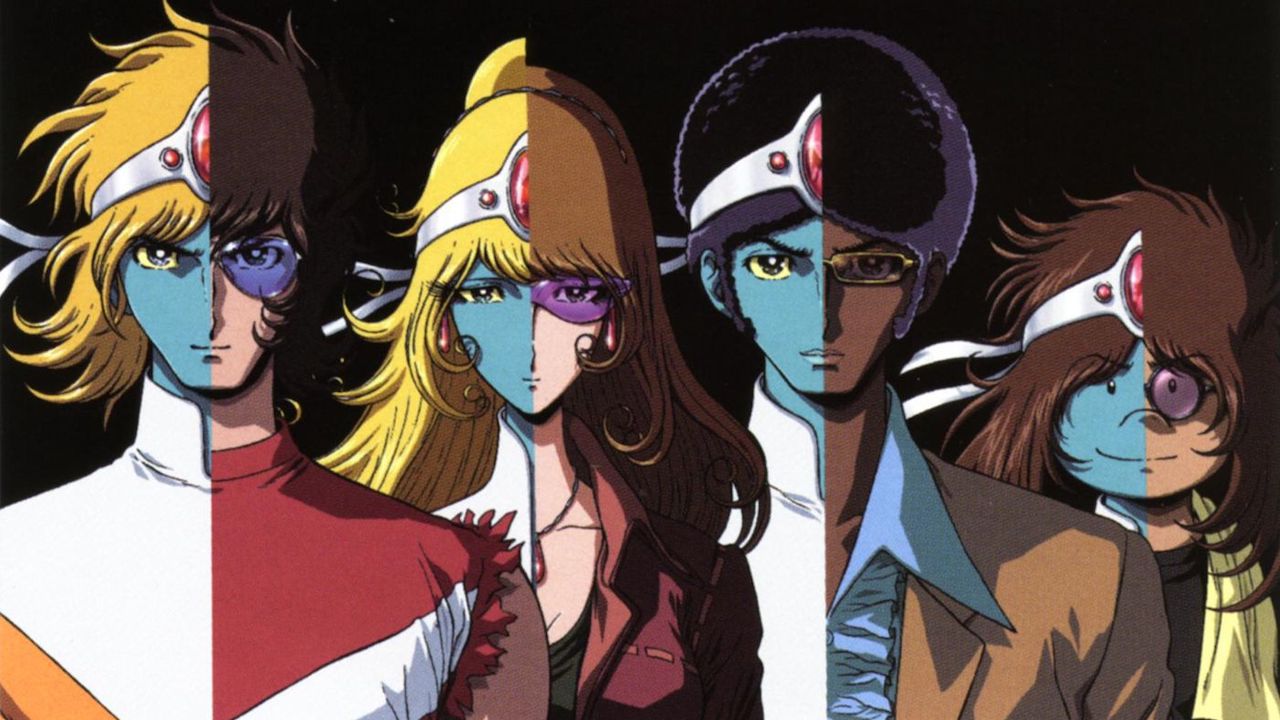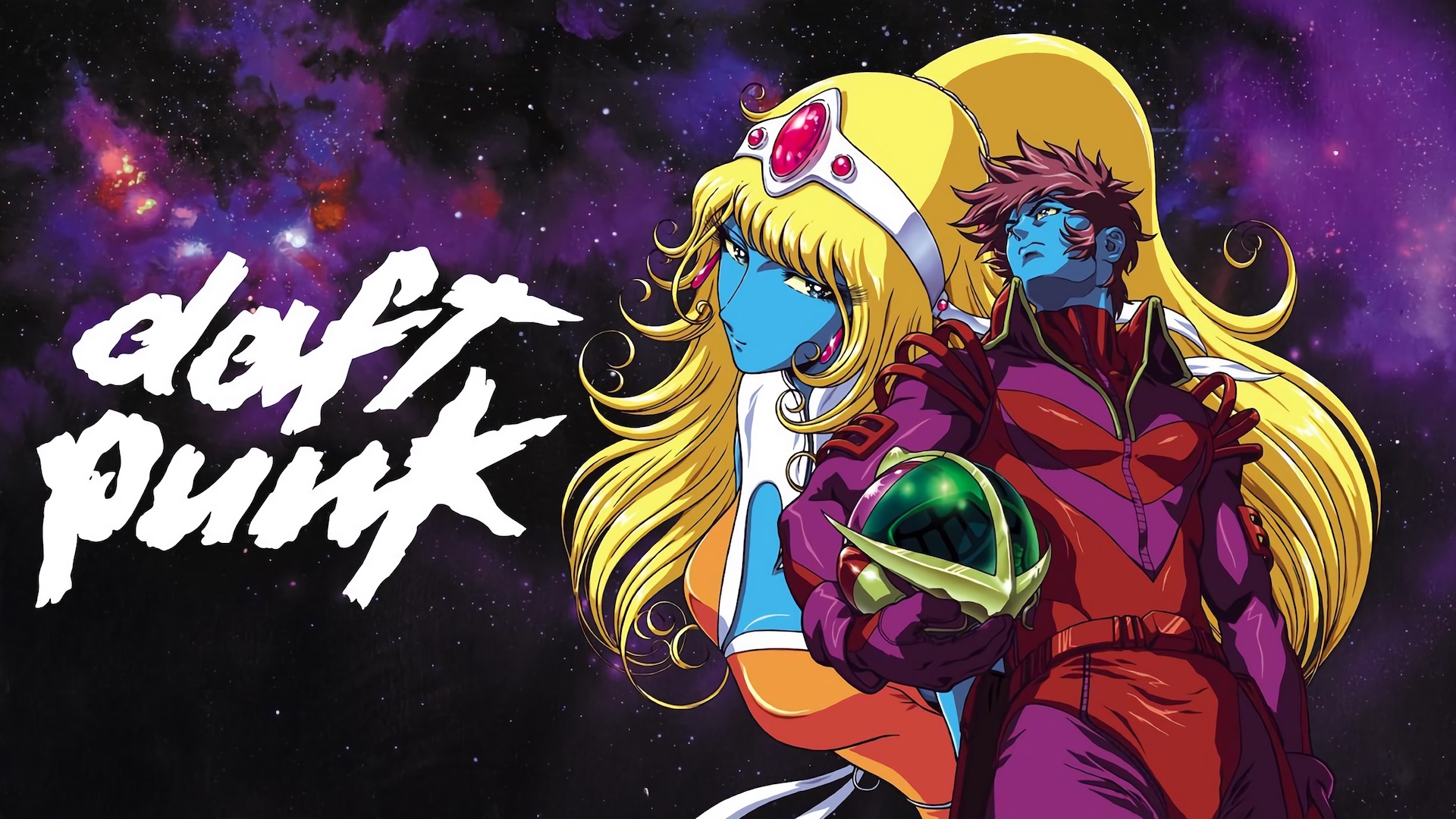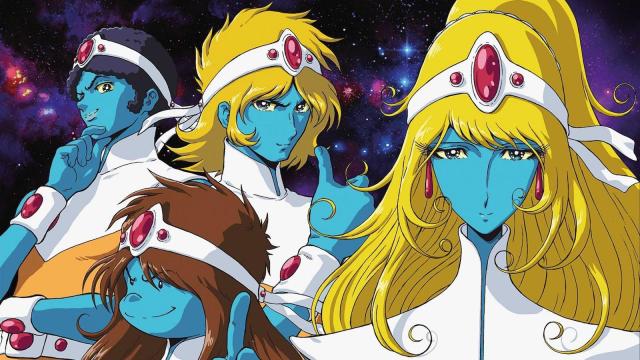I remember how instantly captivated I was the first time I saw the music video for Daft Punk’s ‘One More Time’. It was different it was from any music video I’d seen before. It looked like Dragon Ball Z and Sailor Moon, except not.
I’d occasionally catch one of the individual music videos for the other songs from the band’s 2001 album, Discovery, usually late at night. I’d instantly stop whatever I was doing when one came on, trying to piece the story together like a jigsaw. It was exciting, new and I needed to know more. Years later I’d discover that it wasn’t just a couple of music videos but a whole movie.
Daft Punk — AKA Thomas Bangalter and Guy-Manuel de Homem-Christo — came up with the idea of making an animated music video during the production of their second album, Discovery. In the DVD’s introductory pamphlet – a true relic of a different era – the band described that they wanted to make something that mixed “science-fiction with the decadent world of show business, limousines with spaceships.”
So, with their completed album and a story concept, they reached out to one of their childhood idols: the late Leiji Matsumoto, a legendary manga artist and anime director whose work includes series like Space Battleship Yamato, Space Pirate Captain Harlock and Galaxy Express 999. Matsumoto, impressed by the band’s music and pitch agreed to act as the film’s visual supervisor. Released in 2003, Interstella 5555: The 5tory of the 5ecret 5tar 5ystem is a feature-length music video that uses Discovery as a score; a self-proclaimed “House Musical.” The end result is a stunning hybrid of Japanese animation and French electronica.
The 5tory of the 5ecret 5tar 5ystem

The film follows a band of blue, humanoid aliens who are captured by an evil record producer, Earl de Darkwood. The band is brainwashed and made to look human, becoming puppets who play the hits and sell records in service of Darkwood’s sinister motives. There is hope on the horizon in the form of a Shep, a daring pilot and a huge fan of the band. Responding to a distress signal, he pursues the band and their abductors through a wormhole but crash-lands on Earth. Oh, and his spaceship is shaped like a Gibson Flying V. It’s cool as hell.
Of course, Interstella 5555 (pronounced Interstella Four Five, apparently) wasn’t the first film to use a band’s album as a backing soundtrack. The movie adaptations of Pink Floyd’s The Wall and The Who’s Tommy both spring to mind. Where Daft Punk’s film stands apart from these cinematic rock operas is that it features no dialogue with very few lyrics—and even then, those lyrics aren’t exactly complex. The film totally relies on the visual storytelling of director Kazuhisa Takenouchi, Matsumoto’s elegant and fantastical sci-fi designs, and the mood conjured by Daft Punk’s music. The characters don’t utter a single word, but their body language paints a vivid portrait of who they are.
The music and the visuals complimentary one another so well, it’s hard for me to think about one without thinking of the other. The frantic guitar solo of ‘Aerodynamic’ scores guitarist Arpegius’ desperate attempt to escape his captors. The thumping beats that open ‘Superheroes’ capture the excited, high-energy pre-show feeling as a huge crowd fills a stadium to see The Crescendolls perform. ‘Something About Us’, one of Discovery’s slower, dreamier tracks becomes the score to a romantic fantasy sequence between Shep and Stella, the band’s bassist. ‘Harder, Better, Faster, Stronger’, one of the album’s hit singles, is now the soundtrack to the band’s transformation into brainwashed slaves. The song’s repetitive, upbeat chorus takes on a sinister tone, becoming a hypnotic mantra for their new role as Earl de Darkwood’s puppets.
Earl de Darkwood isn’t interested in the music as an artistic expression, but as something, he can sell to consumers en masse. It’s a product, a means to help him win another gold record. They’re unwilling victims, trapped in a seemingly never-ending cycle. As we later learn, by collecting 5,555 of these gold records and literally sacrificing his musicians, he can gain an incredible power that would allow him to rule the universe.
Within the film, The Crescendolls’ performance of ‘One More Time’ that starts the movie is reconfigured to be the in-universe music video for the song (complete with human re-skinning). Just like in real life, the track quickly becomes the hottest song on the planet. We see a montage of the band playing various Earth venues, but something is off. Compared to their initial performance, their once energetic bodies are now stiff. They play through their songs like a bunch of mindless robots, their expressions stuck in a half-awake daze.
With the help of Shep, the band tries to reclaim their identity from the evil music executive, discovering that they are just the most recent intergalactic musicians to be abducted and co-opted. It’s a not-so-subtle commentary about the exploitative nature of the music industry, and its shallow preference for commerce over art. Discussing the film upon its release, Bangalter notes that, “On the first, naive planet it’s a very festive track, but on Earth, in a commercial environment, it becomes alienated, vulgar, obscene.”
Anime goes mainstream
Daft Punk had always been ahead of the curve when it comes to what is cool. They had been hip to anime since they were kids, which is how they originally fell in love with Matsumoto’s work. As the new millennium dawned, Interstella 5555 landed at the right place at the right time.
The late 1990s and early 2000s were a turning point for anime in the West, with the medium beginning to saturate the mainstream in a way it hadn’t before. The medium’s popularity had been on a steady rise over the previous two decades, first with cult films like Akira and Ghost in the Shell, and then with the dubbed releases of series like Dragon Ball Z, Sailor Moon and Pokémon.
The individual music videos for Interstella 5555 were played somewhat regularly on Cartoon Network from 2001, a TV channel that was easily the biggest proponent of anime’s rising popularity. It would play all-ages anime on its Toonami block and then mature series like Cowboy Bebop during its late-night Adult Swim programming.
If you ask anyone who came up during this era where they saw their first anime, chances are it was during a before-school program like Cheez TV, Cartoon Network or on SBS, which was airing series like Neon Genesis Evangelion and Bubblegum Crisis Tokyo 2040 as early as 1998. If you grew up during this era, then catching one of these series was most likely a formative introduction. For some, the music video for ‘Digital Love’ could’ve been their first exposure to anime, or it was evidence of a deeper iceberg for someone whose interaction with the medium was a handful of Digimon episodes.
While something at the scale of Interstella hasn’t been attempted since its release, the world of popular music and anime have occasionally crossed paths since.
The year after Interstella 5555‘s release, Linkin Park released the music video for their track ‘Breaking the Habit‘, which was animated by Studio Gonzo and supervised by Kazuto Nakazawa – the same team behind the anime sequence in Kill Bill: Volume 1. A few years later, Kanye West would sample ‘Harder, Better, Faster, Stronger’ for his song ‘Stronger‘, which included a music video directed by Hype Williams that is overflowing with homages to Akira.
More recently, the second music video for Dua Lipa’s ‘Levitating‘ took a lot of inspiration from the aesthetic of late 1980s and early 1990s anime, particularly Sailor Moon.
The prime time of Daft Punk’s life

Unsurprisingly, when you combine the music from one of the defining electronic albums of the last two decades with animation designed by one of the medium’s all-time greats you create something wonderful. Much like Discovery‘s immense replayability, Interstella 5555 is an incredibly rewatchable film.
Daft Punk were unpredictable musicians and tastemakers who danced to the beat of their own drum machine. They’ve always been in total control of their music, and their brand – a message that is the crux of Interstella 5555‘s story. Remember when they launched their fourth full-length album, Random Access Memories in the rural Australian town of Wee Waa?
But why an anime, though? “We think that dance music is really about rhythm and dynamics”, the band explained when asked about the chosen medium, “What we like in cartoons and what we think most people like are the rhythm and the speed of the cartoon.”
“In cartoons and music, you are able to be free to do what you want to do. You can be as innovative and imaginative as you want to.”
Interstella 5555 is a collaboration that celebrates the beauty of originality; freedom of expression set by your own terms. Daft Punk, Takenouchi and Matsumoto celebrate the joy that comes from thinking outside of the box and the importance of staying true to yourself when creating art. It’s not a coincidence that the Discovery era is when the band debuted their now iconic robot costumes.
Two decades later, I’m still impressed by how ambitious a project Interstella 5555 was. When I first saw those music videos I was in awe of how unique they felt, like they were signals from another world beamed directly into my television. In hindsight, that makes perfect sense.
A version of this article originally appeared here.

Leave a Reply